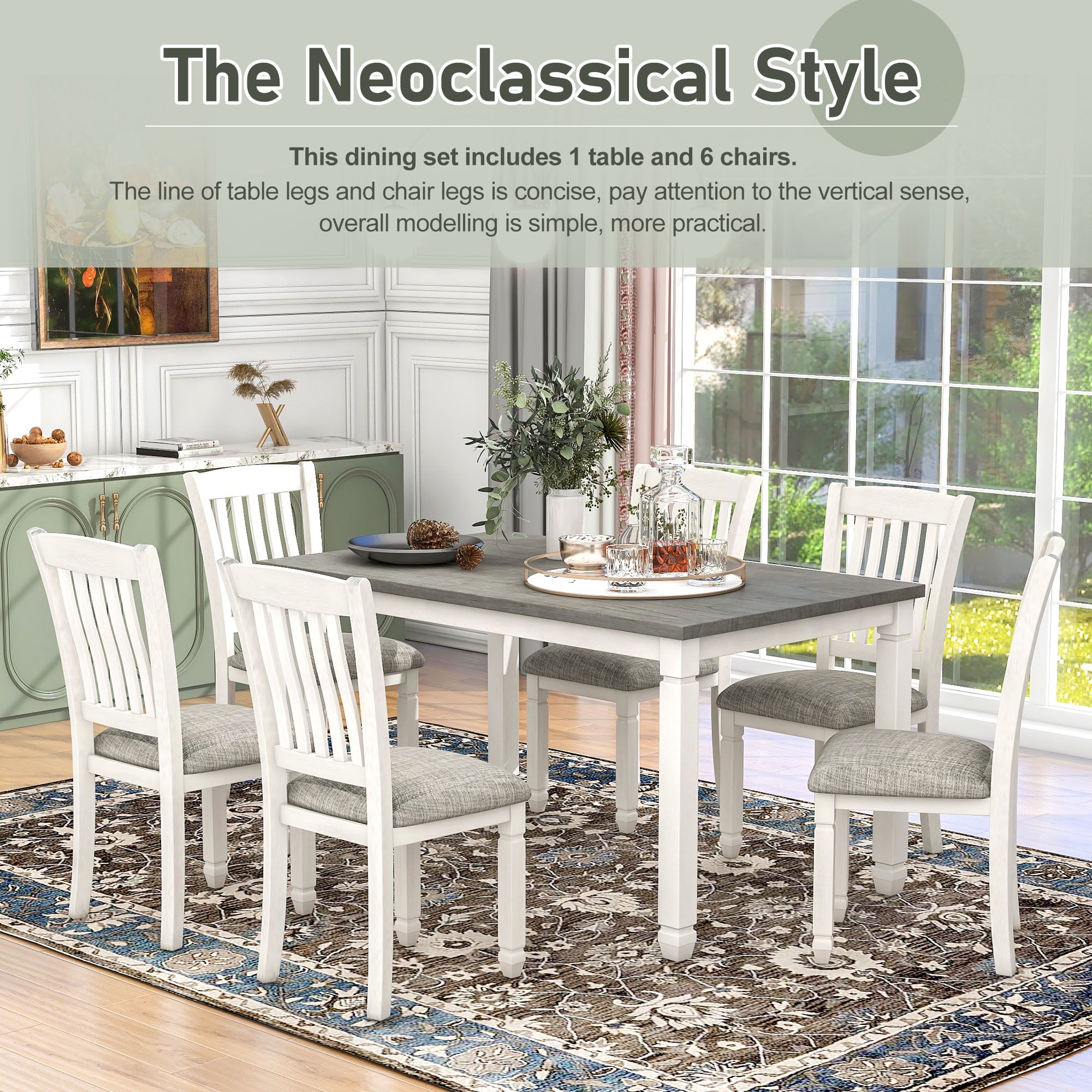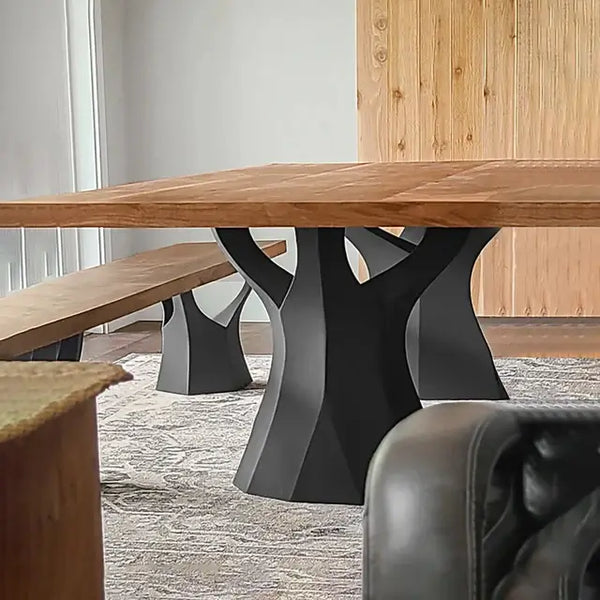From Traditional to Modern: Locate the Suitable Dining Area Table Legs for Your Style
The selection of eating room table legs plays a crucial function in defining the general character of your room, connecting the void between traditional workmanship and modern aesthetics. While timeless designs such as cabriole and transformed legs evoke a feeling of timeless class, modern styles like barrette and geometric choices offer an opportunity for striking aesthetic interest. Examining the right equilibrium in between these styles calls for a nuanced understanding of your existing decoration and individual preference. As you consider these elements, the concern continues to be: just how can you effortlessly integrate these diverse leg designs to create an unified eating experience?
Recognizing Table Leg Styles
The variety of dining-room table leg styles can significantly influence both the aesthetic appeals and performance of the area. Each leg style contributes distinct sensible attributes and aesthetic aspects, catering to diverse layout choices and use demands. Recognizing these designs is critical for picking the ideal table that aligns with your overall indoor style vision.
As an example, tapered legs supply a tidy, traditional look that can boost a space's beauty, while pedestal bases give security and make best use of legroom, making them optimal for smaller sized spaces. Barrette legs, a characteristic of mid-century contemporary layout, present a commercial flair, enabling a ventilated, open feel. Similarly, trestle legs stimulate rustic charm, giving durable support and a feeling of timelessness.
Wood legs can bring warmth and structure, whereas steel options commonly share a sleek, modern ambiance. Ultimately, comprehending table leg designs is essential for creating a cohesive eating location that reflects personal style while making sure usefulness and comfort.
Conventional Table Leg Options
When choosing dining-room table legs, typical alternatives typically personify timeless style and workmanship. These designs reflect a rich heritage and a commitment to high quality, making them excellent for those that appreciate classic looks.
One of one of the most iconic conventional leg styles is the cabriole leg, defined by its stylish rounded form. This style commonly includes attractive makings and is most frequently located in Queen Anne and Chippendale furnishings. One more prominent choice is the turned leg, which boasts a series of smooth, rounded forms that give a timeless appearance while preserving stability.
Additionally, the straight leg, while easy, provides a durable and unadorned framework that can blend perfectly with a variety of tabletop designs. For those attracted to ornate outlining, claw-and-ball feet legs evoke a sense of majesty and can act as a spectacular focal point in any kind of eating space.
Lastly, stand bases, although not purely legs, offer an alternative typical choice that enables ample legroom and can be perfectly sculpted. Each of these conventional leg designs adds to the overall setting of a dining room, weding function with visual charm.

Modern Table Leg Styles
Modern table leg layouts provide a diverse variety of designs that highlight cutting-edge materials and tidy lines. These designs usually prioritize capability while serving as striking centerpieces within a dining area. Minimal looks prevail, with legs crafted from products such as steel, glass, and engineered timber, which add to a airy and modern feeling.
One popular layout is the barrette leg, defined by its slim, conical structure that supplies security without overwhelming the tabletop (dining room table legs). This style is usually found in mid-century modern-day furnishings and can effortlessly match different eating table shapes. Another pattern is using geometric forms, where legs may handle unbalanced or angular forms, adding visual rate of interest and a touch of virtuosity

Mixing Styles for Distinct Spaces
Typically, house owners seek to create unique eating rooms that show their personal style by mixing different style elements. This strategy permits the consolidation of diverse aesthetic appeals, leading to a harmonious yet distinct atmosphere. Pairing a rustic wood table with sleek, modern-day metal legs can develop a captivating contrast that boosts the room's total charm.
Additionally, incorporating vintage table legs with contemporary tabletops can stimulate a sense of history while keeping a modern perceptiveness. Such combinations not just showcase private taste however also motivate creativity, enabling homeowners to curate moved here an area that really feels both personal and welcoming.
Shade plays an important duty in this blending procedure; selecting table legs that match or comparison with the existing color plan can boost visual rate of interest. Whitewashed legs can soften the daring of a dark table surface area, creating a balanced visual.
Tips for Picking the Right Legs
Selecting the right table legs is necessary for attaining both performance and aesthetic allure in your eating room. Begin by taking into consideration the general design of your space. Conventional setups benefit from legs that feature complex makings or transformed designs, while contemporary areas might ask for streamlined, minimal styles.
Following, analyze the height and stability of the legs. dining room table legs. Conventional eating tables vary in between 28 to 30 inches in elevation, so make certain the legs complement this measurement linked here for comfort. Additionally, robust materials, such as hardwood or metal, can enhance stability and durability
Assess the leg shape also-- choices consist of directly, tapered, or pedestal styles. Straight legs provide a traditional appearance, while tapered legs can add a touch of beauty. Pedestal bases supply adequate legroom and are suitable for smaller sized areas.
Final Thought
In recap, choosing the suitable dining room read this post here table legs needs careful consideration of both typical and modern-day designs. By integrating leg design, elevation, and product with the general décor, a natural and inviting ambience can be accomplished.
The variety of eating room table leg designs can considerably affect both the appearances and performance of the space. Eventually, understanding table leg designs is necessary for producing a natural eating area that mirrors personal style while ensuring functionality and convenience.One of the most renowned traditional leg styles is the cabriole leg, identified by its stylish curved form. Straight legs offer a traditional appearance, while tapered legs can include a touch of elegance.In summary, selecting the excellent dining space table legs calls for careful consideration of both typical and modern styles.